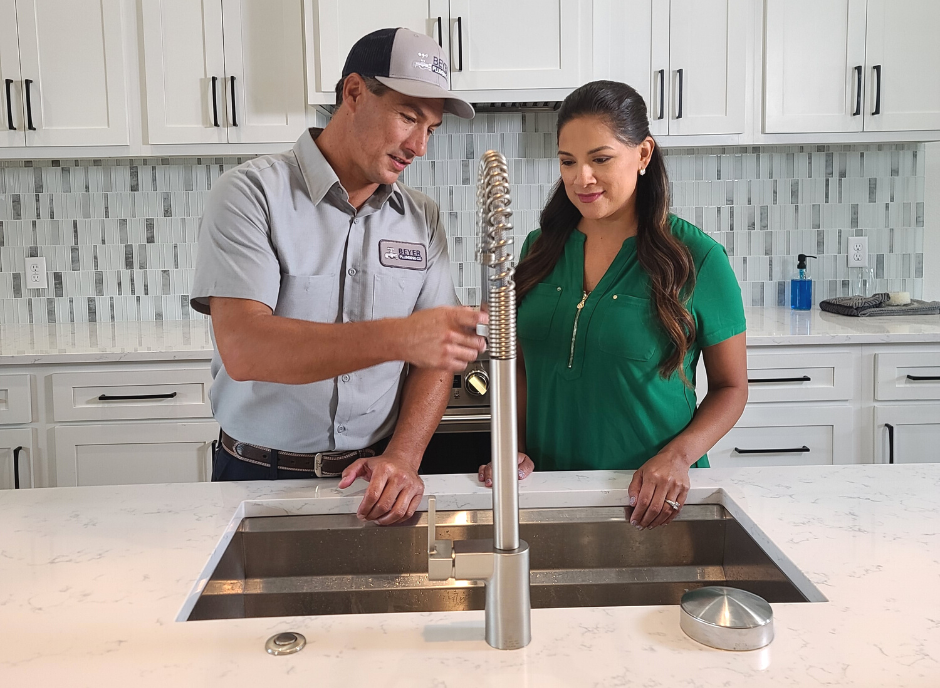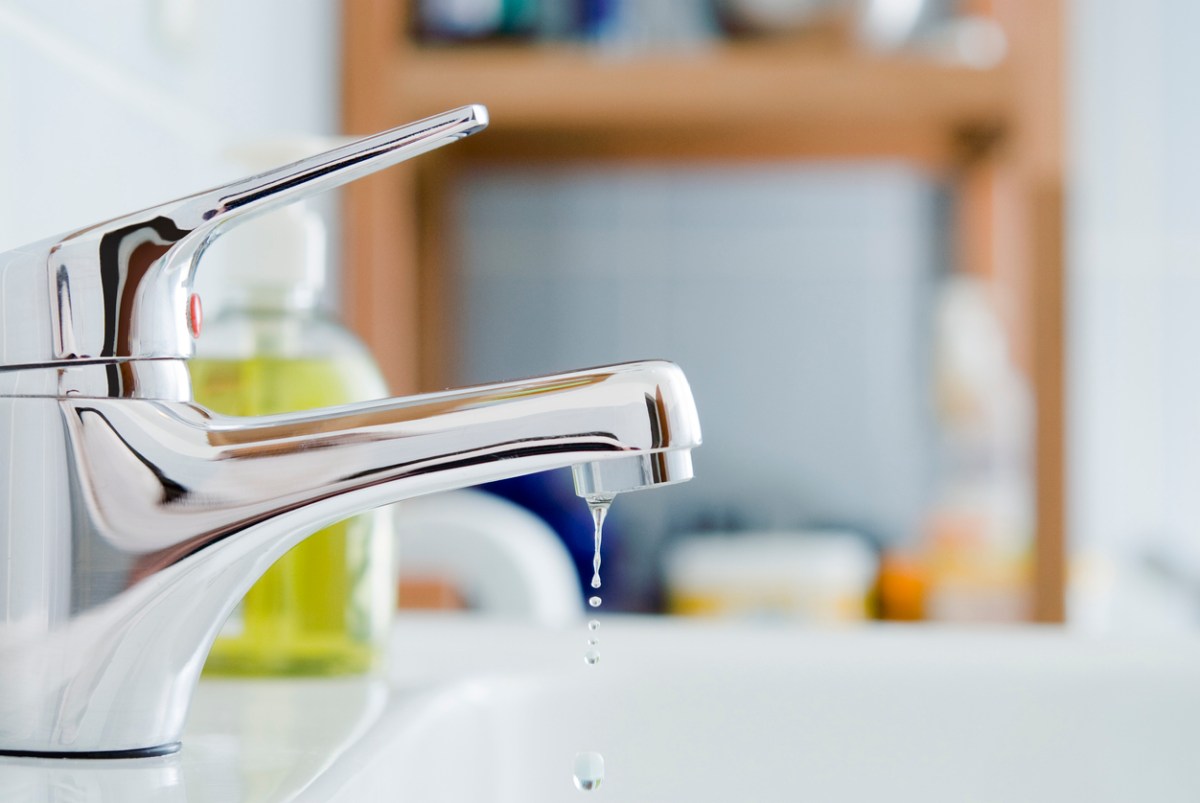Discovering the Value of Repairing a Leaking Faucet
Discovering the Value of Repairing a Leaking Faucet
Blog Article
Were you interested in help involving Why Are My Faucets Dripping (And Can I Fix It Myself)??

Leaking faucets may look like a small inconvenience, but their impact exceeds simply the inconvenience of the sound. From wasting water to incurring unnecessary economic costs and wellness dangers, neglecting a trickling faucet can result in various repercussions. In this article, we'll explore why it's essential to address this common house issue quickly and efficiently.
Waste of Water
Ecological Impact
Dripping taps add substantially to water wastage. According to the Environmental Protection Agency (EPA), a solitary faucet dripping at one drip per secondly can waste more than 3,000 gallons of water each year. This not only stress water sources but likewise influences communities and wild animals based on them.
Step-by-Step Overview to Fixing a Dripping Faucet
Devices Called for
Before trying to repair a trickling tap, gather the needed devices, including an adjustable wrench, screwdrivers, substitute parts (such as washing machines or cartridges), and plumber's tape.
Usual Faucet Issues and Their Solutions
Determine the sort of tap and the specific problem creating the drip. Typical troubles consist of damaged washers, corroded shutoff seats, or faulty O-rings. Refer to maker guidelines or on-line tutorials for step-by-step support on fixings.
Financial Prices
Raised Water Bills
Beyond the environmental impact, leaking taps can blow up water costs considerably. The accumulated wastage in time translates into higher energy costs, which could have been prevented with prompt repairs.
Potential Home Damage
Additionally, extended leaking can cause damage to fixtures and surfaces bordering the tap. Water build-up can trigger discoloration, rust, and even structural concerns if left neglected, leading to extra repair work costs.
Wellness Worries
Mold and Mildew Development
The continuous presence of dampness from a trickling faucet creates a perfect environment for mold and mildew and mildew growth. These fungi not just endanger indoor air quality yet likewise position wellness dangers, especially for people with breathing conditions or allergic reactions.
Waterborne Conditions
Stationary water in dripping taps can become a breeding place for germs and other microorganisms, enhancing the threat of waterborne illness. Impurities such as Legionella microorganisms flourish in stationary water, possibly resulting in major health problems when consumed or inhaled.
DIY vs. Expert Repair service
Advantages and disadvantages of DIY Fixing
While some might attempt to deal with a dripping tap themselves, do it yourself fixings come with their own collection of obstacles. Without appropriate understanding and devices, DIY efforts can exacerbate the issue or lead to insufficient repair work, lengthening the problem.
Advantages of Working With a Professional Plumber
Hiring an expert plumber makes certain that the underlying reason for the leaking tap is dealt with successfully. Plumbers possess the know-how and tools to diagnose and repair faucet problems effectively, conserving time and decreasing the threat of further damage.
Environmental Responsibility
Private Contribution to Preservation
Taking responsibility for fixing leaking taps lines up with more comprehensive initiatives towards water preservation and ecological sustainability. Every person's activities jointly make a substantial influence on protecting valuable resources.
Lasting Living Practices
By focusing on punctual repair work and embracing water-saving practices, people add to sustainable living practices that profit both existing and future generations.
Safety nets
Normal Maintenance Tips
To prevent trickling taps, do regular maintenance such as cleaning aerators, inspecting for leakages, and replacing worn-out components without delay. Furthermore, think about installing water-saving tools or updating to a lot more effective fixtures.
Relevance of Prompt Services
Addressing trickling faucets as soon as they're discovered protects against more water waste and potential damages, eventually conserving both water and cash in the long run.
Influence On Property Worth
Perception of Well-Maintained Property
Keeping a residential property in good condition, including resolving maintenance concerns like leaking taps, improves its perceived value and worth among possible purchasers or lessees.
Influence on Resale Worth
Residences with well-maintained plumbing fixtures, consisting of faucets, command greater resale worths in the real estate market. Attending to dripping faucets can add to a positive perception throughout home examinations and negotiations.
Final thought
Addressing a leaking tap surpasses mere comfort; it's a crucial step toward saving water, lowering financial expenses, and protecting wellness and residential or commercial property. Whether with do it yourself fixings or professional support, acting to deal with trickling faucets is a small yet impactful method to advertise liable stewardship of sources and contribute to a healthier, more sustainable future.
How to Fix a Dripping or Leaky Faucet
A leaking faucet is one of the most common problems that homeowners encounter, but it being commonplace doesn’t make it any less annoying. The constant drip drip drip of a leaking bathtub faucet, showerhead, or sink tap can disturb your home’s serenity. Left neglected, a dripping faucet can also result in higher water bills and discoloration or mold growth in your sink or plumbing fixtures.
Fortunately, you don’t have to be a trained plumber to know how to stop a dripping faucet. With some basic tools, replacement parts, and a little patience, leaky faucet repair is a breeze. In this article, we’ll explain what causes dripping faucets and how you can fix them.
What Causes a Leaking Faucet?
Kitchen and bathroom faucets come in all manner of designs, but most involve some combination of valves, O-rings, seals, and washers. The O-ring is usually the weakest link, but any one of these pieces can wear down over time. Heat, moisture, temperature fluctuations, minerals, mold, and movement can contribute to warping and corrosion, breaking the watertight seal. This just comes with the territory of being a homeowner. Everything is always subject to wear and tear, and some component parts of your appliances and fixtures need to be replaced on occasion. At least replacement O-rings are cheap!
More rarely, dripping faucets can be a symptom of excessively high water pressure. Were this the case in your home, you would probably notice that the leak is not isolated to one faucet. Water pressure issues are harder to resolve on your own. We recommend contacting a professional plumber if you suspect your water pressure is too high.
How to Fix a Dripping Faucet
Pipe wrench or monkey wrench Allen wrench set Screwdrivers Old towel or rag Shut off the water.
Before you do anything, you need to turn off the water to keep from drenching your kitchen or bathroom. You should find a valve under the sink and against the wall. Once you’ve turned this valve, try turning the faucet on to confirm that the water source has been cut off.
If you can’t locate your local valve for the faucet you’re working on, you can always shut off the water to the house at the main valve. Of course, this will prohibit anyone from using the sinks, showers, or toilets while you’re working on the faucet that’s giving you trouble.
Plug or block the drain.
You’ll be disassembling the faucet and removing some small bits of hardware. Plug the drain with a stopper or rag to avoid the possibility of a small screw falling into your P-trap.
Take apart the faucet assembly.
There are several varieties of kitchen and bathroom faucets, each with its own manner of assembly. For detailed instructions on how to disassemble your faucet, you can refer to the fixture’s manual or contact the manufacturer. If you know whether you have a ball, disc, cartridge, or compression faucet, you can find detailed schematics online.
In general, you need to begin by removing the faucet handles. You might notice a small screw that you’ll need to remove with a screwdriver or Allen wrench. If you don’t see any visible securing hardware, it’s likely hidden under a decorative cap that can be unscrewed or popped off with flathead screwdriver.
Remove each piece methodically, consulting a schematic when necessary. Take notes or arrange the pieces in such a way to make it easier to correctly reassemble the faucet later.
Remove the cartridge.
Once you’ve removed the handles and securing hardware, you should be able to remove the valve cartridge or stem. Some cartridges will slide right out. Other faucet models will require you to loosen a nut with a pipe wrench before you can remove the valve stem.
Examine the exposed hardware.
With the cartridge or stem removed, inspect the component parts. Check the rubber O-rings for wear and tear. Also examine the seat washer for corrosion or other damage. These pieces are usually the responsible parties for a dripping faucet, but it’s worth inspecting the other component parts while you have the faucet disassembled.
Find replacement parts.
Once you’ve identified which faucet component has failed, find an identical replacement. Your local hardware store should have O-rings, seat washers, and other standard components in stock. If you have a luxury or uncommon faucet, you may have to contact the manufacturer for a replacement part.
It’s a good idea to take your old parts with you to the hardware store so you can compare them with the store’s inventory and be sure you’re purchasing the correct replacement.
Reassemble the faucet.
With your new parts in hand, reconstruct the faucet and handles. Don’t be tempted to overtighten screws or nuts. You might think this could create a better seal, but it can instead damage or bend a delicate part of the assembly and create a new problem for you.
Turn on the water and test the faucet.
The only thing left to do is test your work. Unplug the sink, turn the water back on, and try the faucet. Congratulate yourself on a job well done!
https://www.libertyhomeguard.com/how-to-fix-a-dripping-or-leaky-faucet/

Do you really like reading up on Why Is It Important To Fix Your Leaking Tap/Faucet?? Put a remark further down. We would be delighted to listen to your opinions about this piece. We hope that you visit us again later on. Sharing is nice. Helping people is fun. Thank you so much for your time invested reading it.
Report this page